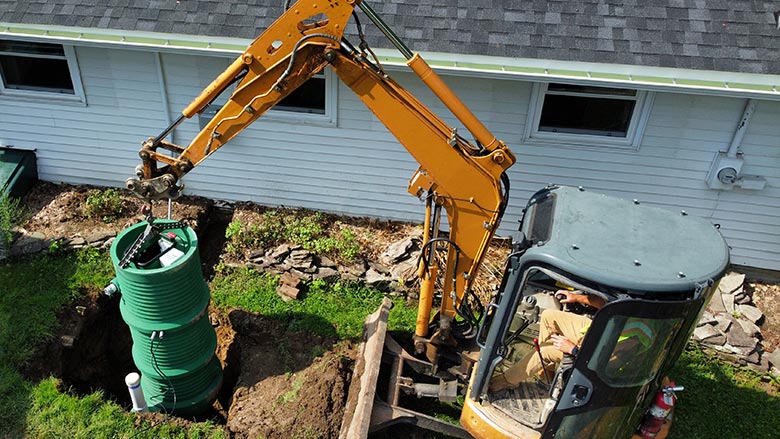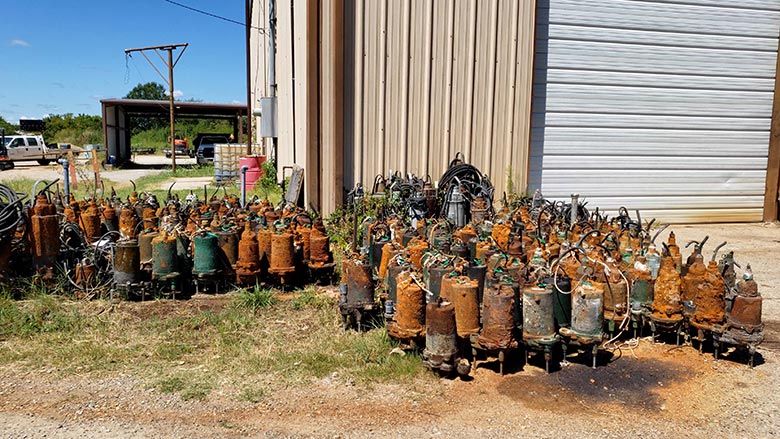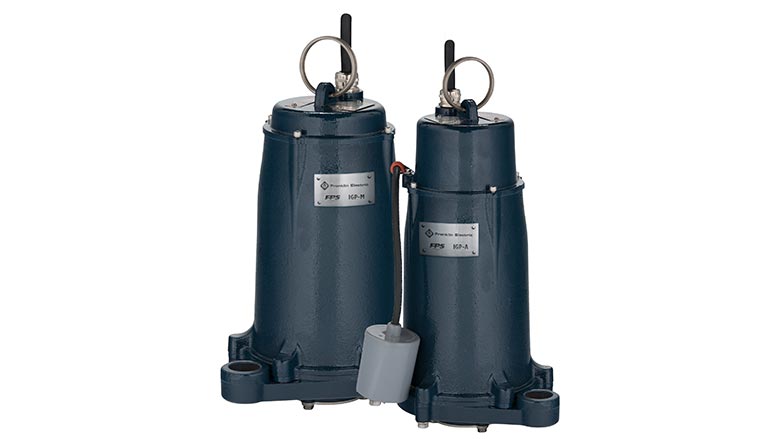The United States is failing, according to the American Society of Civil Engineers (ASCE) 2021 Infrastructure Report Card. The nation’s 2.2 million miles of underground pipes delivering clean drinking water is aging and underfunded. There is a water main break every two minutes and an estimated 6 billion gallons of treated water lost each day in the U.S. enough to fill over 9,000 swimming pools. That’s enough to score a low C- on the Infrastructure Report Card. Wastewater systems scored even worse with a D+.
“Aging structures and systems is the largest issue with our water infrastructure today,” says Jessie Hinther, central regional manager, U.S. Industrial, at Franklin Electric. “Certainly materials of construction can also play a role in the safety of the water delivered as well, which is why we should continue to push to eliminate any hazardous materials from our infrastructure.”
One of the reasons our infrastructure is so significantly impacted by these issues today is because of the lack of investment over many years, notes Dain Hansen, executive vice president of government relations for IAPMO.
“The American Society of Civil Engineers has consistently rated our infrastructure as a D,” he says. “For the past 20 years, ASCE has given us a D or D+, but just last year, for the first time, we have achieved a C-. It is a bit sad that a C- is a reason to celebrate, but it shows we are hopefully trending in the correct direction.”

Help on the horizon?
While not the $3 trillion package President Joe Biden first wanted, the $1.2 trillion Infrastructure Investment & Jobs Act (IIJA) will provide some relief in the form of funding repairs and replacements.
“This legislation is directly targeted to deliver clean water to all American families as well as eliminate service lines that contain lead,” Hinther says. “It will help to expand clean water networks into rural areas of our country as well as urban areas that may be struggling or underserved at the present time.”
Hansen adds the passage of the IIJA will show a significant investment in water infrastructure.
“This law approves $200 million in funding to address lead in school drinking water systems,” he says. “It also includes $11.73 billion for projects directly connected to the identification, planning, design and replacement of lead service lines, along with $1 billion in funding for western water recycling programs and approximately $48 million for national water reuse programs.”
The money is already being directed to the states, Hansen notes. “However, this is one of the single most significant investments in infrastructure, and trying to manage nearly a trillion dollars in new funding is a colossal administrative and logistics issue. While it is a lot of money, it must be spent relatively quickly as well. This funding is spaced out over five years, which seems like a lot of time, but these projects need to get moving to get projects completed with the benefit of federal funds. Even with all our skilled trades, trying to take on $1 trillion in new projects is going to cause a significant strain on current labor shortages.”

Will the $1.2 trillion be enough to update outdated and failing infrastructure? Matt Sigler, PMG executive director for the International Code Council (ICC), doesn’t believe so.
“$1.2 trillion may seem like a lot, but if you look at some of the studies out there, and I'll refer to some of the studies I’ve seen from the American Society of Civil Engineers. Back in 2019, ASCE indicated that for the government to get our water infrastructure up to standard, they would need to invest around $3.6 trillion alone by 2020. Well, the act is only $1.2 trillion, and only a fraction of it is dedicated to water. I don’t think it will be enough.”
Sigler also points out there are other infrastructure issues the IIJA doesn’t address, including the other side of the equation — drainage. “You have the water supply side, but what about the drainage side? What about public sewers? It gets very little play within this act.”
Vice President Kamala Harris visited Milwaukee last month to discuss the infrastructure law, which includes funding for Wisconsin, but not enough to cover everything. Of the money allocated for lead line replacement — $48 million of it will go to Wisconsin this year; however, it will cost an estimated $800 million to replace all the lead pipes in Milwaukee alone, according to the Milwaukee Journal Sentinel.

Overall impact
Hinter notes that the IIJA will allow many municipalities struggling to meet financial obligations of the rising cost of water the funding needed to move forward with system improvements. “It will be a tremendous boost for the plumbing industry as a whole, while benefitting Americans in a wide range of communities. The plumbing industry is filled with highly trained service professionals who are key to ensuring that the infrastructure upgrades are implemented effectively and efficiently.”
When Sigler is asked what else can be done to improve U.S. water safety and security, he immediately responds with improving our wastewater systems/public sewers.
“The IIJA establishes a Water Efficiency Grant pilot program to award owners or operators of publicly-owned treatment work systems to improve waste energy system conversions,” he explains. “It also provides $11.7 billion to the Clean Water State Revolving Fund, which can be leveraged for a number of uses, which could be wastewater, reuse, treatment works and so forth. It could also be used for replacing aging sanitary sewer pipes. But whether or not states take that $11.7 billion and use it for replacing sanitary sewer pipes is very questionable because there are so many other things they are focused on.
“The reason I’m so focused on wastewater is the ASCE has estimated that aging pipes in our sanitary systems have resulted in a discharge of 900 billion gallons of untreated wastewater annually because they’re old, decrepit and cracked. That’s 900 billion gallons of wastewater into our waterways annually. We need to come up with better solutions to these issues.”
One thing Sigler notes can improve our water safety is utilizing smart technology when it comes to all of the nation’s underground infrastructure.
“Utility companies could use sensors or other types of smart technology to predict infrastructure failures in order to make informed decisions,” he says. “They could detect when there's a leak or when a pipe needs to be replaced. Of course, the rub with this one is, though we know that smart systems could be an invaluable tool for utility companies to determine the conditions underground, I think the challenge is whether or not utility companies will adopt such technology to use in the first place. And it has to be done through grant programs — there has to be some sort of incentive for them to do implement this technology.”
“Water safety is imperative to sustaining life and it should always be a priority for everyone,” Hinther adds. “Continuing to invest in the integration of additional security measures will pay dividends for generations to come and help improve their overall quality of life.”
Giambra/iStock/Getty Images Plus via Getty Images.




